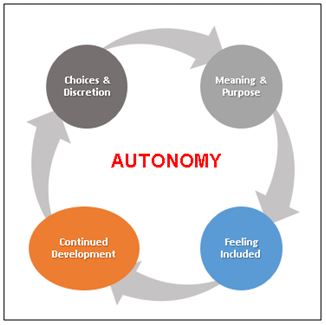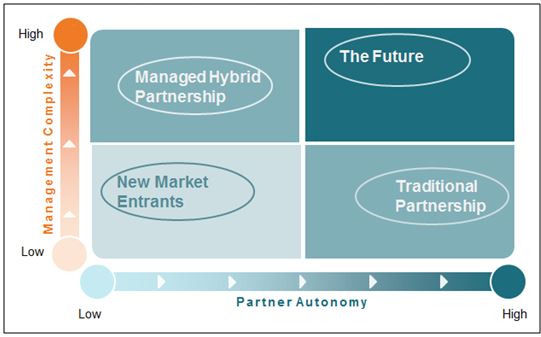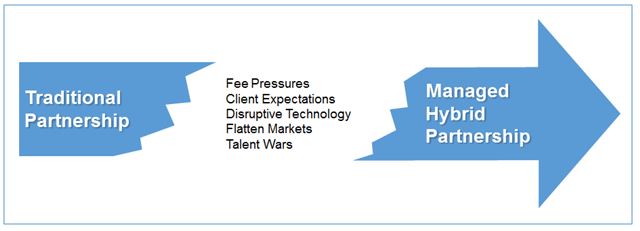
When we speak of a traditional partnership, it includes concepts like
- participation by the full partnership in governance decisions,
- the provision of services by professionals exercising relatively unfettered discretion, and
- the use of collegial structures as the basis of organization.
All are designed to "respect professionals" desire for autonomy, to maintain the principle of partnership, and to promote acceptance and cooperation.
Alternatively, when we speak of a managed hybrid partnership, we envision centralizing many of the decisions previously made in more collegial ways and embracing a consistent strategic vision that is uniform across the firm and drives decisions and actions in all of its practice areas.
As a result of this evolution towards a hybrid-like partnership, many firms have taken on an organizational structure somewhat similar to the one below (illustrative purposes only as recognize that some positions are combined and even outsourced by some firms):
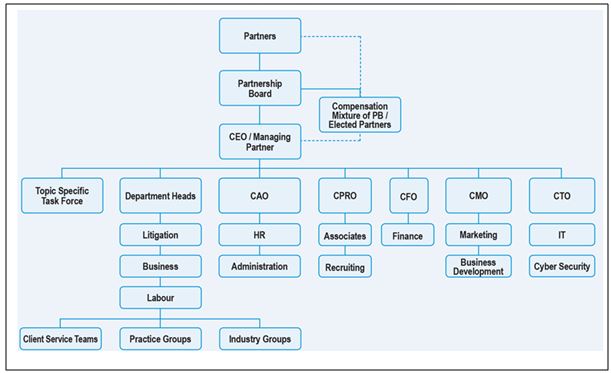
Full Circle
A case can be made that the more recent generations of lawyers are not totally in tune with the hybrid concept. Dr. Larry Richard has pointed out that to manage millennial generation lawyers, firms must among other things create an environment which provides (some literary license was taken):
Neither the traditional or the management hybrid governance structures by themselves will create the type of environment that will attract and keep the more recent generations of lawyers. This may be the single greatest reason for why firms should be considering embracing the strengths of both structures versus polarizing their firms.
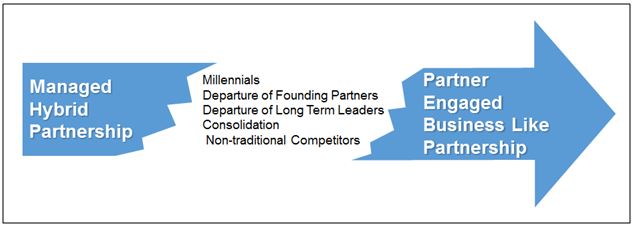
As much as firms have spent the last two or three decades minimizing lawyer involvement in firm management, I expect we will see a return to increased lawyer participation albeit in a more directed and specific fashion.
Future
Obviously, the key is finding the right balance for your firm. This can only be done if the proponents: traditional, managed hybrid partnership, and partner engaged business-like partnership adhere to the following three principles:
- A willingness to appreciate the values espoused by all parties;
- Acceptance that compromise is the order of the day; and
- Strict oversight by the firm’s management of the balance and a willingness to make the necessary adjustments, either way, in a timely, consultative manner.

